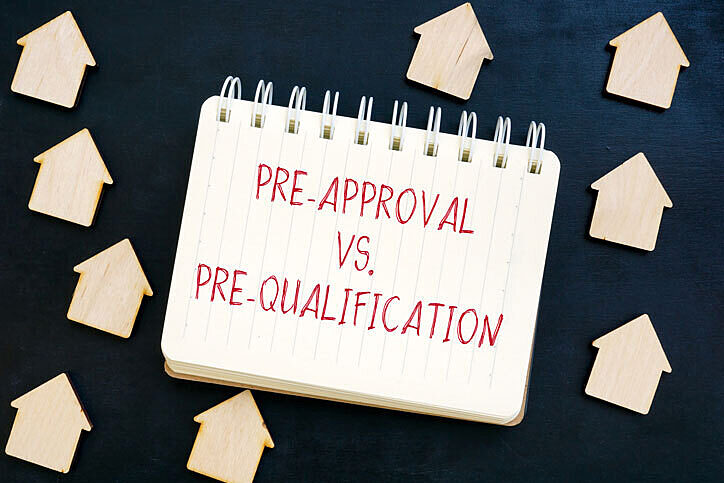Prequalification and Preapproval: Two Steps Closer to Homeownership
Going from house hunter to homeowner.
Looking for homes is fun. Financing your home, on the other hand, can feel complicated.
A great first step is figuring out how much house you can afford. Knowing this helps you browse within your budget, and signals to sellers that you’re a more serious shopper.
Prequalification and preapproval are two types of mortgage approvals. In plain language, these are steps a lender (aka a credit union or bank) takes to verify that you can afford a mortgage, and how much of a mortgage.
Although prequalification and preapproval share a prefix, each process serves a different purpose. Below we explore the differences plus some suggestions for the right time to take each step.
Prequalification: Estimate your price range.
Prequalification is a quick, easy way to get an idea of how much house you can buy. Just give your lender some basic information — often your estimated household income and debt — and they’ll generate your approximate price range in minutes.
Prequalification relies on self-reported information and doesn’t require any verification of your credit score or financial records. This means that prequalification alone won’t carry much weight when you’re talking to sellers. Rather than a serious approval, this step is more to help you get an idea of your spending range before you start shopping for keeps.
Into DIY? A Mortgage Budget calculator is a great place to start plugging in some numbers and seeing where you’re landing.
If you’re more comfortable talking with a mortgage specialist, give us a shout.
When to get prequalified
Get prequalified at the very beginning of your home-buying process. This way, you can start looking at houses in your price range, and avoid falling in love with something else.
Pre-approval: Get your loan and go.
Unlike prequalification, pre-approval is your bonafide lender approval for a specific loan amount. You’ll supply your lender with more financial information including items like proof of income, tax returns, and bank statements. The lender will review your info and do the math to determine the size and terms of your loan. This process is serious and detailed, so it can sometimes take up to a week.
When you’re pre-approved, sellers will know they can trust your offer. It saves them having to verify your financial records themselves and makes you less of a risk, which can help you stand apart from other offers. Pre-approval also helps you house-hunt with confidence. You’ll walk through every new front door with the certainty of knowing you can back up your offers.
When to get pre-approved.
Your pre-approval is only good for 90 days, and it’s a good idea to avoid multiple pre-approvals because each one shows up as an inquiry on your credit report. Only get pre-approved when you’re ready to start making serious offers.
Well on your way to home-sweet-home.
When it comes to prequalification and pre-approval, one isn’t any better than the other. They both serve different purposes at different stages of the home-buying process. Find your price range with confidence using prequalification, and, when you’re ready to commit, get pre-approved and make some offers to lock down your new dream home.
